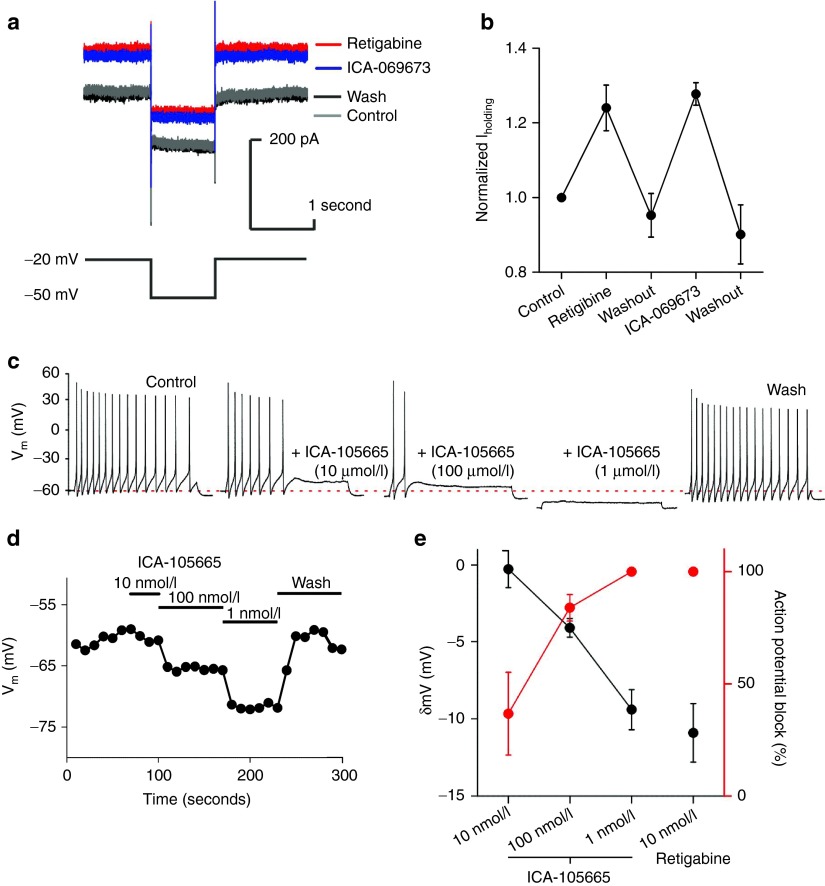Figure 7.
Human pluripotent stem cell (hPSC)-sensory express KCNQ2/3 channels and a retigabine-sensitive IK(M) which contribute to resting membrane potential and regulate excitability. (a) IK(M) was identified utilizing an activation voltage-step protocol (bottom panel) a small slow current relaxation was observed when stepping to a −50 mV deactivation step resulting from IK(M) deactivation. (b) Retigabine- and ICA-069673-sensitive current were observed and quantified (retigabine: 1.2 ± 0.1 normalized current, n = 4; wash: 1.0 ± 0.1 normalized current, n = 4; ICA-069673: 1.3 ± 0.01, n = 4; wash: 0.9 ± 0.1, n = 4). (c) KCNQ2/3 openers affect hPSC-sensory membrane potential and excitability. Representative trace of action potential trains evoked with a depolarizing current injection. The KCNQ opener ICA-105665 hyperpolarizes the membrane potential resulting in fewer evoked action potentials in a concentration-dependent manner and could be rapidly washed. The initial resting membrane of −60 mV is represented by the red dotted line. (d) Representative experiment demonstrating the membrane potential for ICA-105665. (e) Quantification showing the inverse relationship between RMP and evoked action potentials in hPSC-sensory.

